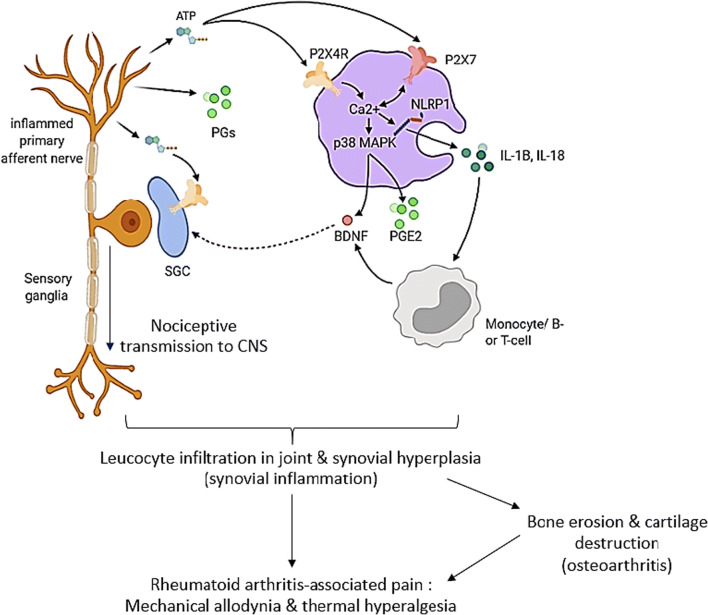Fig. 2.
Mechanism of P2X4R at peripheral region involving peripheral nerve lesion and inflammatory cells. Following the injury of a peripheral nerve due to inflammatory reactions in synovial fluid, the released ATP and PGs from the damaged nerve activate P2X4R expressed on the macrophage. Subsequently, the highly Ca2+ influx into the macrophage cell may activate p38 MAPK leading to the release of BDNF and PGE2 into the synovial fluid and surrounding nerves. The high influx of Ca2+ also indirectly stimulates P2X7R to allow the production of pro-inflammatory factors from macrophage, which further enhances the BDNF release by monocytes, B- and T-cells. Moreover, the released pro-inflammatory cytokines can further stimulate NLRP1 inflammasome on the macrophage. The synergistic effects between injured peripheral nerves and inflammatory cells lead to the leukocyte infiltration in joints and synovial hyperplasia. The prolonged synovial inflammation may further lead to bone erosion and cartilage destruction (osteoarthritis) and therefore transmit the nociceptive signals to a central level that develop thermal hyperalgesia and mechanical allodynia; the common symptoms of RA-associated chronic pain

